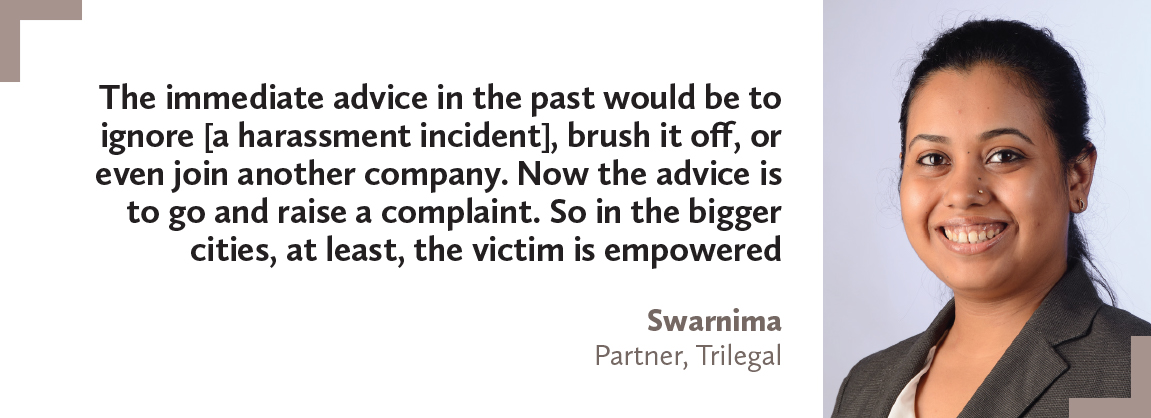India’s #MeToo movement has reignited a countrywide discussion about sexual harassment in the workplace. Several companies have set up mechanisms to tackle this issue, but many still lack the legal knowledge, sensitivity and training required to prevent a miscarriage of justice. Vandana Chatlani reports
In India, we live in several centuries simultaneously”, remarked writer Arundhati Roy during an interview a few years ago. “In this country we have people who practise female infanticide, female foeticide in which millions of girl children are killed … and at the same time we have the freest, strongest, most vibrant women anywhere in the world, the most independent and radical women, original thinkers who are on the front lines of struggles.”
This dangerous dance in India of taking one step forward and two steps back is perhaps partly what inspired Indian women and men to throw down the gauntlet and speak up about harassment. Women such as journalists Priya Ramani and Pallavi Gogoi, actresses Tanushree Dutta and Sruthi Hariharan, and singers Shweta Pandit and Alisha Chinai are among those powering the #MeToo movement in India, openly naming their alleged harassers. Their voices have sparked a revolution where victims of harassment need no longer remain silent or feel ashamed.
Swarnima, an employment law partner at Trilegal, explains how things have changed since the introduction of the Sexual Harassment of Women at Workplace (Prevention, Prohibition and Redressal) Act (POSH) in 2013. “Initially, in the first year or so, complaints would come in and the victim would say, ‘I want you to do something about it, but I want to remain anonymous and I don’t want an official complaint to be raised’. That was a big challenge because the law requires someone to lodge a formal complaint and for principles of justice to be followed.”
You must be a
subscribersubscribersubscribersubscriber
to read this content, please
subscribesubscribesubscribesubscribe
today.
For group subscribers, please click here to access.
Interested in group subscription? Please contact us.
你需要登录去解锁本文内容。欢迎注册账号。如果想阅读月刊所有文章,欢迎成为我们的订阅会员成为我们的订阅会员。
Read more:
Who’s to blame? – Harassment comes in many forms, but some of it may be down to cultural and social differences. Swarnima, partner at Trilegal, and Alpana Srivastava, general counsel at Jones Lang LaSalle reveals examples as to why that might be so
How to file a complaint – A brief introduction to submitting sexual harassment complaints
Weighed down – Looking beyond the law to ensure gender parity, writes Shraddha Mor Agrawal, vice-president and head of legal at Mizuho Bank
Blowing the whistle – How HR and legal departments should work together to resolve harassment complaints



























